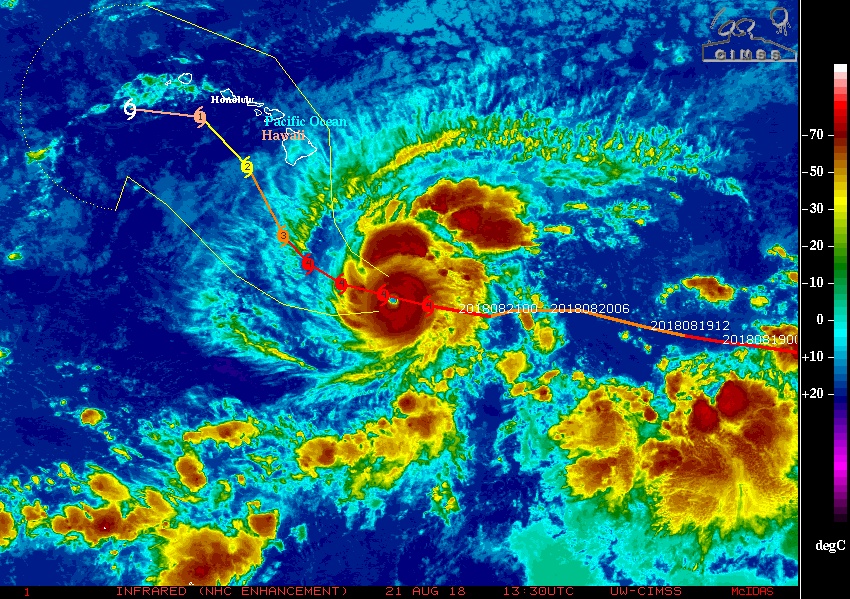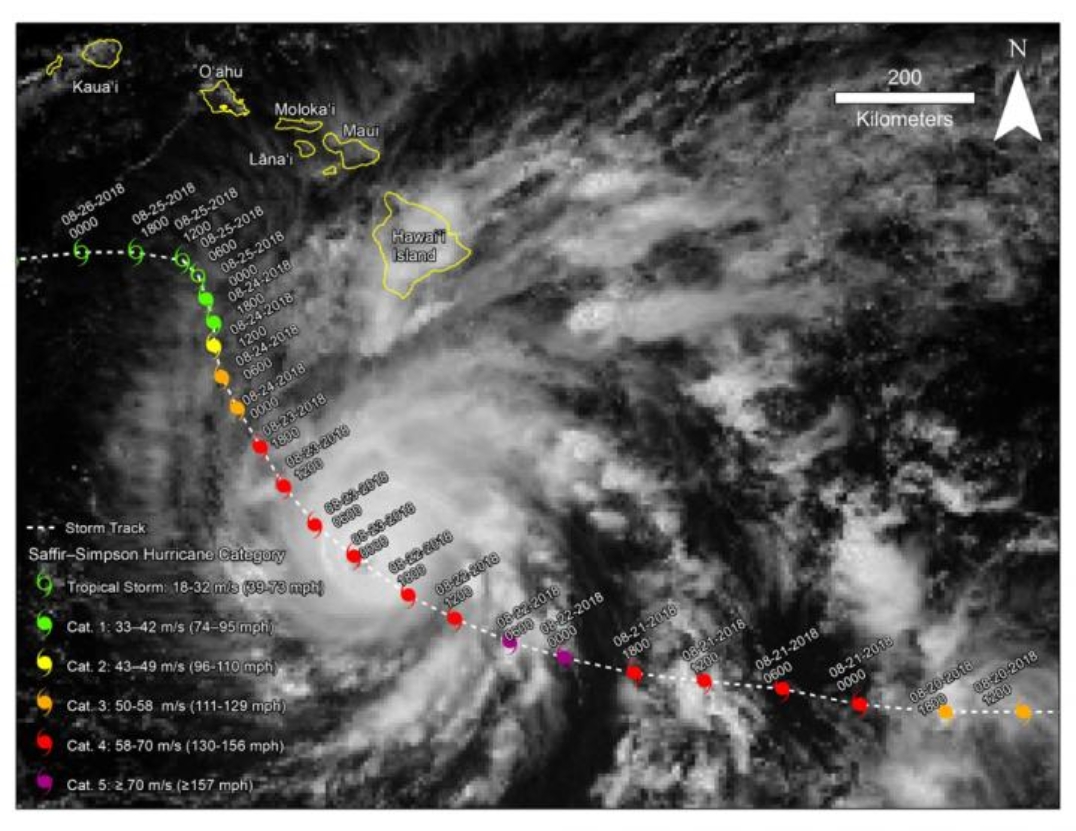Hurricane “Lane” caused first known case of both heavy rainfall and multiple instances of fire simultaneously

A recent study by the University of Hawaii examined the impacts of the 2018 Hurricane "Lane" and revealed that preceding moisture conditions brought by the storm exacerbated fire hazards, and both fire and rain severity were impacted by the hurricane environment.
In August 2018, Hurricane Lane brought an average of 432 mm (17 inches) of rainfall over a four-day period, with a four-day single-station maximum of 1 448 mm (57 inches), making it the wettest tropical cyclone in Hawaii. According to the Central Pacific Hurricane Center, it was also the fifth Category 5 hurricane in the Pacific basin on record.
New research detailed the compounding hazards of fire and rain produced by the storm.
"In this study, we document what we believe to be the first instance of a hurricane causing both heavy rainfall and contributing to multiple instances of fire simultaneously," said lead author Alison Nugent, also an assistant professor of Atmospheric Sciences at the UH Manoa School of Ocean and Earth Science and Technology.
A team of scientists from the UH Manoa and East-West Center investigated multiple aspects of the storm's meteorology and climatology, the environmental conditions leading up to the severe weather, and recorded the associated socio-impacts.
The findings showed that land-use characteristics and preceding moisture conditions aggravated fire hazards, and the severity of both fire and rain was influenced by the hurricane environment, as well as the local topographic features.
Researchers found that conditions at the edge of the storm led to dry, windy weather conducive to fire, while nearer the storm's center, the extremely moist atmosphere lifted by the islands' mountains brought intense and prolonged rainfall.
The simultaneous events of rain-induced flooding and landslides, multiple fires, and strong winds complicated emergency response.



"The surprising thing about Hurricane Lane was that, despite never making landfall, the storm caused considerable damage and disruptions across the state from two rather contradictory things: fire and rain," Nugent explained.
"Severe flooding on the windward island of Hawai'i Island built over several days, and multiple fires initiated on the lee sides of Maui and Oahu within hours of each other. Hurricane Lane is one of only three documented cases of hurricanes influencing wildland fire risk in real-time."
In Hawaii, landfall by hurricanes is considered rare due to persistent vertical wind shear over the islands, which weakens storms by tipping them over. However, when hurricanes occur near the islands, geography can worsen the hazards. The steep mountainous terrain can also enhance flash flooding and trigger landslides.
The study highlighted Hawaii's vulnerability to natural disasters and revealed that such events can place major constraints on emergency responders. In the future, the team plans to develop the analytical approaches and Hawaii-focused climate products required to assess and prepare for future impacts.


Hurricane Lane's track. Image credit: Nugent, et al.
Reference
"Fire and Rain: The Legacy of Hurricane Lane in Hawaiʻi" – Nugent A. D. et al. – Bulletin of the American Meteorological Society – https://doi.org/10.1175/BAMS-D-19-0104.1
Abstract
Hurricane Lane (2018) was an impactful event for the Hawaiian Islands and provided a textbook example of the compounding hazards that can be produced from a single storm. Over a 4-day period, the island of Hawaiʻi received an island-wide average of 424 mm (17 in.) of rainfall, with a 4-day single-station maximum of 1,444 mm (57 in.), making Hurricane Lane the wettest tropical cyclone ever recorded in Hawaiʻi (based on all available quantitative records). Simultaneously, fires on the islands of nearby Maui and Oʻahu burned 1,043 ha (2,577 ac) and 162 ha (400 ac), respectively. Land-use characteristics and antecedent moisture conditions exacerbated fire hazard, and both fire and rain severity were influenced by the storm environment and local topographical features. Broadscale subsidence around the storm periphery and downslope winds resulted in dry and windy conditions conducive to fire, while in a different region of the same storm, preexisting convection, incredibly moist atmospheric conditions, and upslope flow brought intense, long-duration rainfall. The simultaneous occurrence of rain-driven flooding and landslides, high-intensity winds, and multiple fires complicated emergency response. The compounding nature of the hazards produced during the Hurricane Lane event highlights the need to improve anticipation of complex feedback mechanisms among climate- and weather-related phenomena.
Featured image credit: NASA/NOAA Suomi NPP/VIIRS, Acquired Aug. 22, 2018.

Commenting rules and guidelines
We value the thoughts and opinions of our readers and welcome healthy discussions on our website. In order to maintain a respectful and positive community, we ask that all commenters follow these rules.